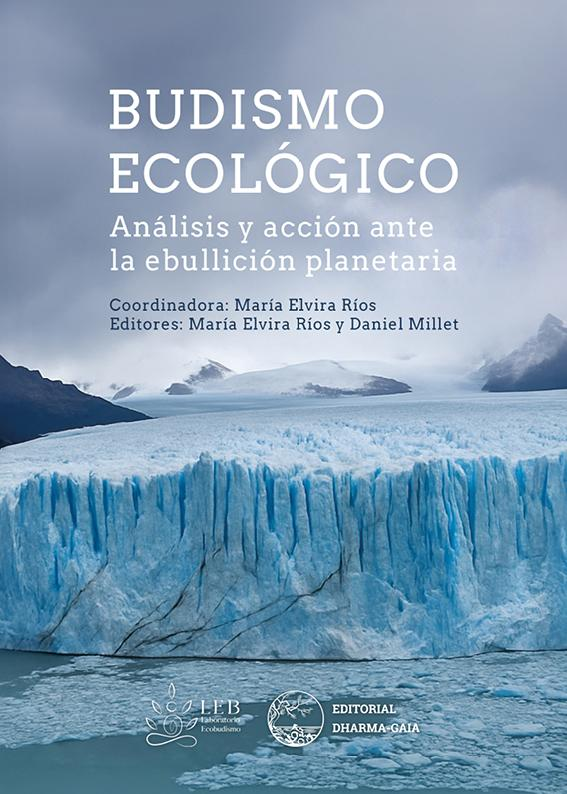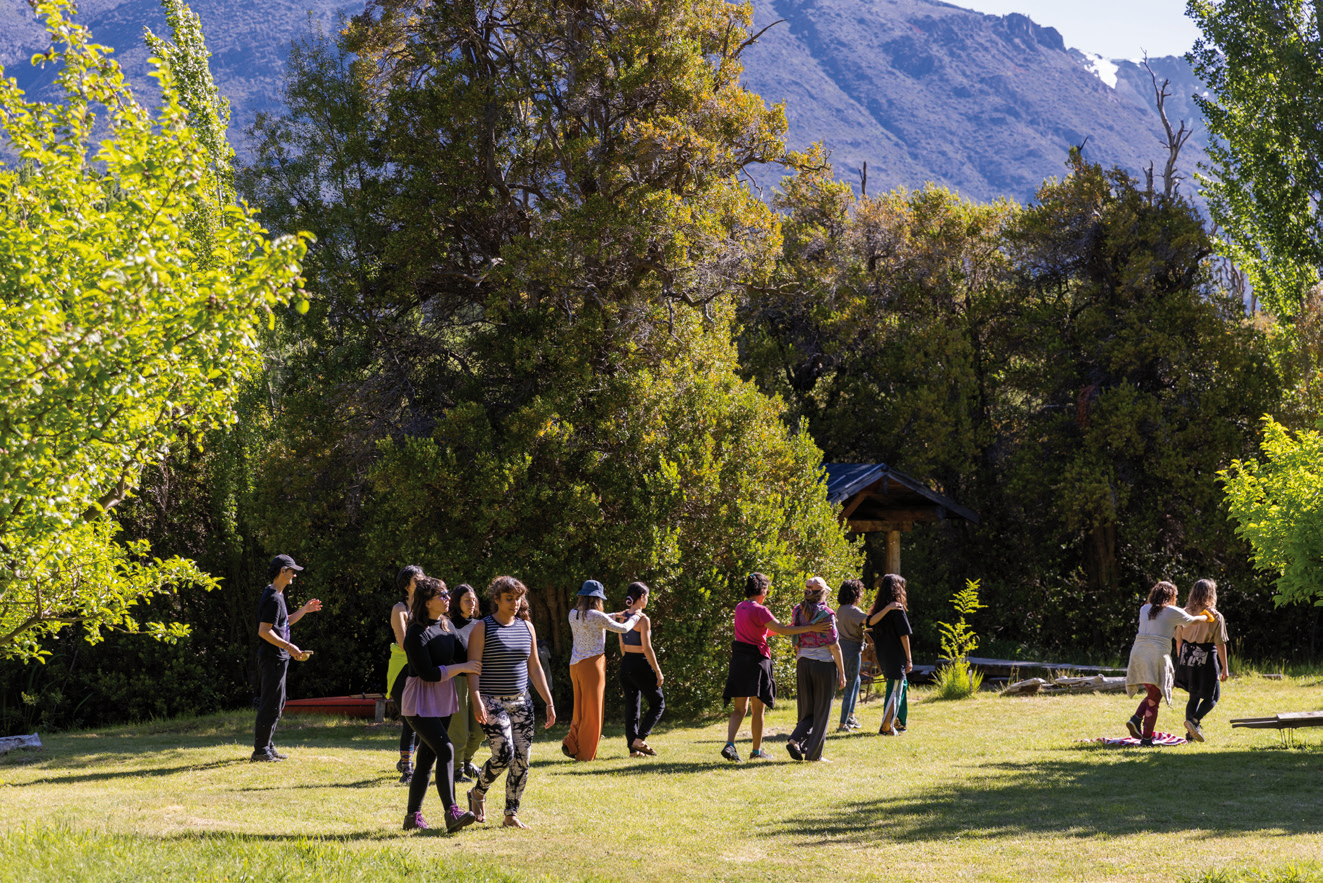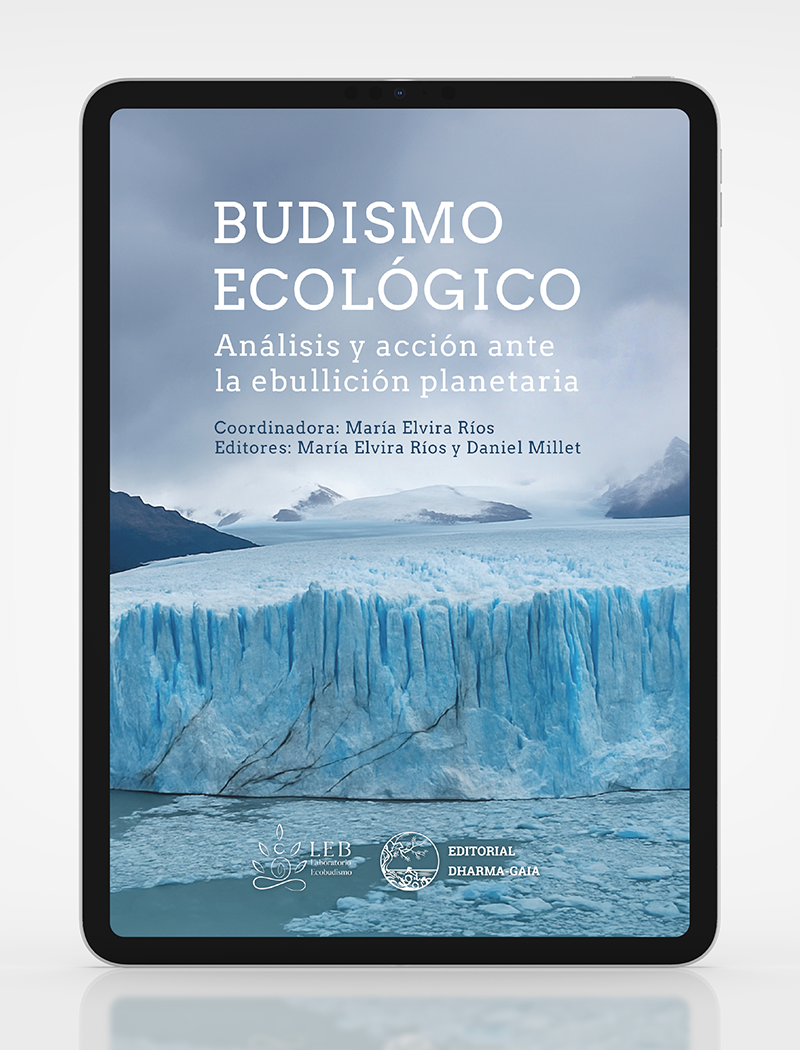Rios Peñafiel, María Elvira (Coord.) (2025). Ecological Buddhism. Analysis and action in the face of planetary boiling. Editors María Elvira Ríos Peñafiel and Daniel Millet Gil. Dharma- Gaia Publishing House.
In October 2023, the Ibero-American Network for the Study of Buddhism (RIEB) together with the Dharma-Gaia Foundation (FDG) shaped the first Conference on Buddhism and Ecology, in which the question was raised about the contributions that Buddhist studies could make in the face of the climate crisis we are going through. The proposals, both theoretical and practical, that were presented on that occasion were brought together for joint publication in the work that we review here, Ecological Buddhism. Analysis and action in the face of planetary boiling. The coordination was in charge of María Elvira Ríos Peñafiel, who simultaneously served as editor with Daniel Millet Gil.

The volume is divided into four sections: “Global Context and Dharma”, “Ecological Approaches from History, Doctrine and Eminent Monks”, “Interdisciplinary Proposals and Collectivity” and “Buddhism in Ecological Action”. In the first two we will find analyses of the critical situation of the environment that use Buddhist interpretation frameworks to understand their causes and the reasons why the answers given so far do not generate significant results. In addition, possible paths to travel are tested that begin with a change of perspective to face the problem. In the third and fourth sections, the authors offer various proposals based on their own experiences of daily action that are available to anyone.
I don't have enough space to analyze each contribution in depth, so in what follows I will outline only a few ideas that underlie the different chapters and that form true intersections that bring unity to the book and open us to multiple ways of responding to the challenges posed by the environmental crisis. This does not exhaust all the lines of reflection proposed to us by the authors, but it seeks to make a presentation that is, first of all, an invitation to discover the others.

First of all, one of the problems pointed out throughout the chapters of this book as the cause of the crisis and its continuous deepening is that of the illusion of the self: the illusory perception of a reality in which human beings and the rest of the beings of nature (animals, plants, seas and other beings and organisms that make up our ecosystems) are presented to us as separate. Moreover, they appear as part of an unequal relationship, in which the latter are conceived as nothing more than a backdrop and resources available for the consumption and well-being of the former. Contrary to this illusion, the different authors of this work offer views that start from a different ontology.
Buddhism teaches us that all beings, human and non-human, integrate nature in an order of continuity and interexistence, where some are not available to others to be exploited, but are closely related to each other. The importance of a deep understanding of the concept of interdependence becomes the common thread of these works, which, despite drawing on diverse scriptures and experiences, focus on the need to build new narratives based on the need to address the climate crisis of our planet from a more conscious perspective on the true nature of the self in relation to its environment. Thus, several of the contributions insist on the need to change perception and narratives by returning to Buddhist conceptions about emptiness and impermanence. Non-dualistic thinking is one of the keys that would allow us to change the way in which we think about the crisis and deal with it, avoiding the anthropocentrism that brought us here.

In relation to these ideas, which point to the interconnection between all beings (the “interser”), a critical element also emerges that is pointed out by several of the authors: the lack of attention that is observed in various Buddhist traditions to the role of power structures in the lack of action on the part of states and international organizations. For this reason, the authors highlight the importance of collective action to respond to problems that are also the result of the complex social structures that shape a market society where extractive capitalism plays a major role in deepening the environmental crisis. Thus, reflection on the dominant patriarchy, the role of the rulers and of activism in its different forms is becoming important.
This brings us to another point that I am interested in highlighting: the potential of dialogue and exchange between different universes of meaning, among which we find, of course, Buddhism in all its diversity, as well as science, social, environmental, feminist, indigenous, artistic and neighborhood organizations, among many others. If the problem lies in the lack of understanding of the fundamental interdependence between all beings, the need to build and expand bridges between social activists, political, spiritual and academic leaders cannot be overlooked. In this sense, many of the authors of the chapters that make up this volume are vivid examples of how physics, art, philosophy, anthropology or ecofeminism can dialogue with Buddhism, and their contributions make clear the richness of these dialogues.

Finally, an element that appears explicitly in some works, and that is present in others, although not so clearly, is attention to emotional and affective experience. To be truly present, aware, in the here and now, to perceive other sentient beings, to listen to the nature that surrounds us. Several of the proposals for action revolve around how reconnecting with everything that is presented to us as separate from us is of fundamental importance when it comes to truly understanding what is at stake and the way in which, as one of the authors proposes, we “interact”. And this brings us back to the beginning, since it is in this mindfulness that we can take the first steps to become truly aware of how critical the situation we are in and begin to face it from narratives that are more coherent with the nature of the world.
If the purpose of the book is to think about how Buddhism can contribute, both from theory and from practice, this work achieves this by presenting not only proposals, but by describing effective forms of action that are already being put into practice in various communities of the Ibero-American world. If the book proposes dialogue, in the different chapters we already see the richness of the results of these dialogues. Added to this is an element that I cannot fail to mention. This is the style of all the authors, who without neglecting the rigor in their work, achieved writing of the highest quality and clarity, which makes this work accessible both to those who have deep knowledge of Buddhism and its various traditions, as well as to those who wish to make their first approaches to them.
Without further ado, I hope that these lines will achieve their purpose of becoming an invitation to read this valuable contribution to studies, both on Buddhism and on environmental issues.
EDITOR'S NOTE:
Ecological Buddhism: analysis and action in the face of planetary boiling, is now available in digital format (ISBN 978-84-09-74705-4) for free download under the Open Access regime. Thanks to the generous support of the Dharma-Gaia Foundation, this valuable interdisciplinary work is offered freely and accessible to all, with the aim of encouraging reflection and action in the face of the climate crisis from a Buddhist perspective. Download the book hither
The printed version (ISBN 978-84-09-74666-8) of the book is now for sale on the Dharma-Gaia Foundation website. You can buy it directly by clicking hither

DENISA WELSCH
Institute of Anthropological Sciences, University of Buenos Aires
Denise Welsch has a degree in Sociocultural Anthropology from the Faculty of Philosophy and Letters of the University of Buenos Aires, a doctoral fellow at the Institute of Anthropological Sciences of the University of Buenos Aires and a professor of Anthropology and Sociology. She is the author of several articles on the Buddhist practice of the Argentinian Soka Gakkai. He is interested in the study of the symbolic aspects of religious practices and how these shape processes of construction and transformation of subjectivity.
*This article has been published simultaneously on the website of Buddhistdoor in Spanish.











